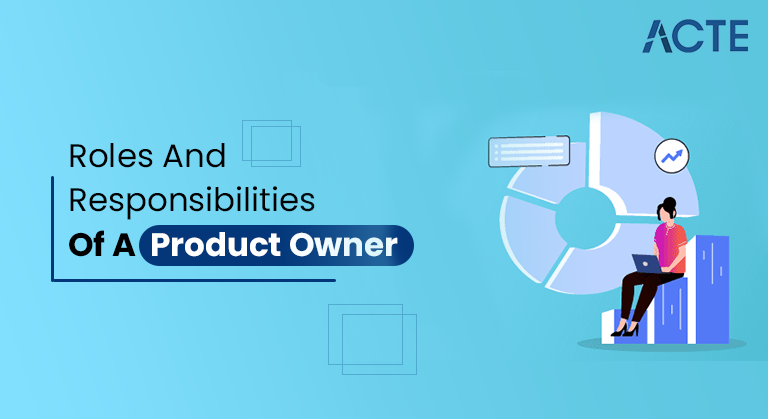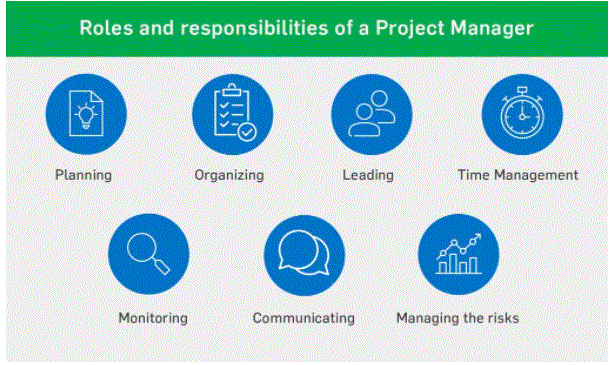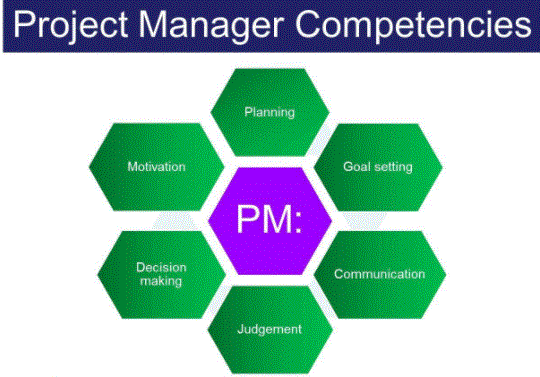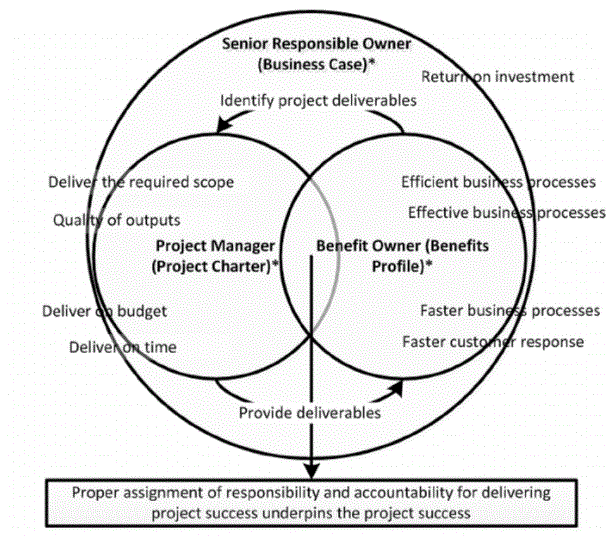
Roles And Responsibilities Of A Product Owner : Everything You Need to Know
Last updated on 09th Dec 2021, Blog, General
The Product Owner (PO) is a member of the Agile Team responsible for defining Stories and prioritizing the Team Backlog to streamline the execution of program priorities while maintaining the conceptual and technical integrity of the Features or components for the team.
- Introduction of Product Owner
- Tools of Product Owner
- Skills of responsibilities of a product owner
- Features / Characteristics
- Types/methods of Product Owner
- How it works
- Why it is needed and important?
- Benefits of Product Owner
- Conclusion
Introduction of roles and responsibilities of a Product Owner:
Product Owner Role is an essential part of any quick scrum team. A key goal in the Product Owner role is to represent the customer on the development team. An important function is to manage and make product failures, or a priority list for future product development needs. In fact, the owner of the product is the only person who can change the order of the items on the product back. One unique feature of Product Owner obligations is that you should be available to the developer team at all times to answer any questions team members may have about the customer’s opinion on how to use the product feature.

- Explain and set out the key features
- Customise the road map for all audiences
- Add Aha! Roads with 30+ tools, including Jira, Azure DevOps, Salesforce, and Google Analytics.
- Statistics
- Size
- Use the digital product statistics forum to help teams better understand user behaviour.
- Create business dashboard visibility in real time.
- Understanding
- Learn how users interact with your product and identify key details to promote customer satisfaction and retention.
Tools of Product Owner:
Product strategy and road planning
After all! Roadmaps is a complete product management suite – everything product teams need to set a strategy, gather feedback, and build visual road maps. You can use Aha! Roads to:
Crowdsource Ideas
Report on progress
Domo
Geckoboard
Drag data from multiple sources to display real-time dashboards showing corporate performance.
GoodData
Collect user data and decisions in dashboards and reports.
Google stats
Find out where your traffic is coming from and what people are doing on your site.
Lots
Download all user interactions from the web, mobile, and cloud services. Analyse clicks, posts, transactions, emails, and more.
Mbeki
Monitor each section for detailed user information with embedded statistics, backed by the Google Cloud data analysis platform.
Mixpanel
Track interactions on your mobile site by measuring and tracking user actions.
Part
Collect, translate, and transfer customer data from any device to any tool and extract unique data views.
Table
Explore and understand data better with this popular business intelligence software.
Customer feedback and surveys
After all! IdeasDownload all the ideas and use the best ones to improve the renaming. After all! Ideas provide everything you need to manage ideas – online ideas online, sympathetic moments to better understand your customers, and in-app feedback to find out what people think of your product while actually using it.
Formstack
Create online surveys and direct electronic signatures.
Google Forms
Create simple forms and free surveys.
SurveyMonkey
Create surveys and integrate business information and applications.
Type
Create surveys, questions, and forms.
Features Of Product Owner/ Characteristics
The Product Owner has certain features that can make them a great professional and help in their career growth and job creation. Here are a few features of a good Product Owner that can make them the best in their field.
1. Accept Product Vision
The main function of the Product Owner is to receive the product idea. It all depends on the Product Owners’ opinion, what the product will look like after the developer. The excellent quality of the Product Owner is that they can visualise the product before it is built and direct the Scrum Team to the developer process. Everything the Product Owner offers must be in line with the needs of the customer, and all information should promote product development and further product success. The Product Owner must have the ability to make his or her idea a reality by actively leading the team and communicating with stakeholders.
2. Great product information
The Product Owner should have a great knowledge of the specific product they are making and the scope of the product in the market. This feature can create a clear idea of what kind of response and reputation can benefit a product once you are in the market. Product Owners should also be prepared to provide productive guidance to the developer team so that the product does not need to be impatient at any time.
3. Wonderful Storyteller
The Product Owner needs to have a way of conveying his thoughts to the developers by cutting the client’s story while explaining the product requirement to the developers. If a Product Owner wants to be a good Product Owner, you need to make clients news and their needs a feature of the product. The Product Owner needs to have skills that can encourage developers to create features that they clearly define. Only then, a product that satisfies the customer can be improved, and the product can be successful.
4. You are overly conversational
The Product Owner should be a particularly approachable person for developers, stakeholders, and the customer. Proper communication about the last days, product specification should be communicated to developers in an elite tone. Most successful Product Owners advise that a good old-fashioned face-to-face conversation will be most beneficial. Also, the engineer’s doubts are cleared without delay, so the engineers do their best to improve the product.
5. Great Problem Solver
Since managing a Scrum Team, communicating with stakeholders, and understanding customer needs, can be a daunting task, a Product Owner should certainly be prepared for everything a job requires. Product development will go through difficult times due to uncooperative people, few of whom have a negative view of the product, and customers requesting product changes at the last minute. The Product Owner must address all of these challenges and come up with a solution that best suits the situation.

Skills of responsibilities of a Product Owner:
Strategic thinking
Often, today’s workers do not have time to think strategically about their job. In fact, research shows that 96% of employees say they do not have time to think strategically because they are so overwhelmed with the day-to-day running of their work.
That makes the strategic concept very important. The ability to quickly and easily identify patterns and set your own view of a product will ensure that teams are aligned and work toward the same goal — and that the final product you develop is created with a clear, strategic purpose in mind.
Good communication and collaboration
Strong communication skills are essential for success in almost all personal and professional situations. And visual communication skills are very important for product managers who need to speak clearly and quickly about the great ideas in the various groups. In fact, people who follow graphic guidelines do 323% better than those who follow text-based guidelines alone.
User flow can help product managers talk openly about performance at UX with designers. While it may take some time to build, the user flow is important because it can serve as a reference point and a real living source for any product development project.
Strong project management
Product management and project management are related, but they do not change. Instead, effective project management skills are needed to ensure that teams adhere to the roadmap for product development and implementation goes smoothly. It’s all in the details — and the quickest way a product manager can interrupt a project is by ignoring important events, communications, or deadlines.
Effective resource allocation and devolution are also an important part of project management. From the C-suite to the UX design team, product development involves broad collaboration across all teams and roles — and it is up to the product manager to facilitate communication, improve workflow, and ensure that everyone strives for the same goal.
Technical information
The type of product, the people who use it, and the type of company that will determine how professional the PM needs to be. For example, a data science product with machine learning algorithms and APIs needs a technical level to understand not only how to build a product but also how to communicate confidently with the customers who will use it.
In addition to specific product requirements, however, leading product managers have a basic understanding of software development cycles, A / B testing, product engineering, and analytics testing platforms.
Focus on UX
A good product manager should be able to define the goals of his users and work on a product road map to meet those needs. In small groups, product managers can act as an inactive UX designer and should be able to communicate confidently with design teams about common design patterns, easy-to-use preferences, and user behaviour.Types of Product Owner:
As its name suggests, the Product Owner in Scrum owns the product. Note that word choice is intentional. The role is not called product manager, feature vendor, product backlog, user profile, or project manager — although that is sometimes the way it is interpreted. Nor is it called a “product manager” to indicate the level of empowerment and respect for Product Owners who need to be successful in their work. But you can think of a Product Owner as an older product manager, as I explain in the article “Product Manager vs. Product Owner ”.
If the Product Owner is the owner of the product and is responsible for increasing its value, then it is important to understand what the product is. I view a product (digital) as an asset that creates value for a group of users and a business. If I need to take a break from writing, I save a document. Product name. But the ability to save a document is a feature, part of the product as a whole.
If someone is referred to as the owner of the product, the person should be the sole owner of the product — as the Word in the example — not just part of the product — as the ability to save a document. Referring to people as Product Owners who do not own the product and who do not use the right ownership is wrong in my mind: It creates confusion and sets the wrong expectations: The person who owns the product component cannot take responsibility for increasing product value. and achieving product success. Additionally, a person does not need the necessary authority to make decisions and does not need the same skills.
A product like Microsoft Word, of course, can be too big to be managed by one person: You need a few product people to work with. But once again, I would suggest that there should be only one Product Owner.
Feature Owner and Component Owner:
Feature Owner is the owner of a skill that end users can share, for example, the ability to persist with a Word document or edit it. Part holder is the owner of a building block such as the user interface or payment service. Component owners often need in-depth technical skills. For example, a persistent service owner should be able to define its communications or APIs and communicate with users — members of the development team using the service.
Court Owner
The software platform is a collection of digital assets used for several products, as I explain in detail in the article “Leveraging Software Platforms”. The stadium owner owns such a stadium. One has a responsibility to increase the amount of revenue generated by a platform, for example, to reduce the time to market for products built on it or to reduce development costs.
Safe Product Owner
SAFe’s Quick Measurement Framework utilises its role of Product Owner, SAFe Product Owner. Despite the similarity of the name, the role is very different from the Scrum Product Owner. Although Scrum Product Owner owns the entire product, SAFe Product Owner looks at product details, explains user issues, works in small product backlash, and works with one or more development teams.
Portfolio owner
The portfolio owner looks after the product group, and the role is also known as the product portfolio manager. Contains products like Word, PowerPoint, and Excel. The portfolio owner’s job is to increase the amount that builds a product portfolio. These include active portfolio management, collaborating with Product Owners responsible for products within the portfolio, harmonising individual product strategies and product lines, aligning mass releases, managing dependencies, and helping to create general user experience across a wide range of products.
How to become a Product Owner:
Becoming a Product Owner requires a complete understanding of the product as well as analytical skills and techniques. Someone who wants to dig deep and become a good Product Owner needs to understand the market and stakeholders. He should be able to make an impression and know when to mix the leftovers with the product so that the bucket stays on top.
You can choose some of the best certification programs offered by the various authorities and gain confidence in this area. From my experience, I would recommend that you choose a domain and be successful!
According to Roman Pichler, a leading Agile expert and author of the book “How to Lead in Product Management”, the main responsibility of a Product Owner is to ensure that the product creates value for its customers and users, as well as the company. Think of a Product Owner as a person who fights for a product, makes product decisions easily, and has the final say on the product. ” Pichler also says. “This includes how and how the response is made, and what features are released.”
- Facilitate communication between participants,
- To improve product design,
- Visualise the complexity of a product,
- To support long-term and short-term planning,
- By using well-defined backlogs to maximise development efficiency.
Why Product Owner
Team building is one of the most important things you need to consider when launching a software development project.
The number of other roles is obvious from the beginning. For example, engineers and testers write and test the code, respectively. However, roles such as Product Owner or Scrum Master are less specific.
So why do you need a Product Owner?
That is the question we will answer in this article, with both your views and the perspective of your development team, highlighting the potential benefits.
In fact, Product Owner can improve your software development project in 5 ways:
key roles and responsibilities of a Product Owner:
1. Make a case for the thought
The ageing Product Owner could be a key figure within the development team, exploiting their high-level vision to outline goals and make a vision for development. Product house owners square measure answerable for human action with stakeholders throughout the board, as well as customers, business executives, and also the development team to make sure that the goals square measure clear and also the vision aligns with the business objectives.
2. Managing product backlogs
One of the foremost necessary responsibilities of a commencement Product Owner is to manage product backlogs. This can be an inventory of project implementation team developers. Because product backlogs square measure perpetually dynamic , the merchandise owner should create the list accessible and accessible to any or all stakeholders (especially developers) to make sure improved performance and project outcomes.
3. Range wants
Another necessary role of the merchandise owner is to range wants. In different words, they ought to embody the Triangle, budget, and time, and measure the priorities consistent with the requirements and goals of the participants.
4. Overseeing the stages of development
With the vision, strategy, and merchandise priorities set, the merchandise owner ought to pay valuable time overseeing the particular development. they’re the key players in every event, which incorporates coming up with, refinement, review, and running.
5. Expecting shopper wants
An effective commencement Product Owner is an associate degree knowledgeable in understanding and anticipating the requirements of the shopper to effectively manage the event method.Their in-depth market data and communication skills permit them to anticipate issues or wants and wear them down.
Benefits:
Availability in the group
The Product Owner should be available to the team daily. He cannot be a respondent after two days. Generally, we work with sprints for two weeks. If he is a difficult person to contact, he will inevitably contribute to the sprint effect, and may lead to its failure and other issues / activities will not be brought.
Ability to make final decisions
Remember that the Product Owner is always the final decision maker! We have a lot of stakeholders and project sponsors in the project – all of whom can suggest new jobs in the background. However, it is always up to the Product Owner to decide which scope should be adjusted by the team. In the development team, his words are more important than the opinions of other participants.
It prioritises product backwardness
Prioritising product backlogs is one of the key responsibilities of a Product Owner. Sometimes he has to make poor decisions, for example, when he puts printing materials first. Development team members often ask the question of which activity is most important and which needs to be answered.
Communication
There is a need for effective communication. And by negotiation I do not mean that you always speak. So not only speaking but also listening, watching, and writing accurate reports.

- Software development is an ongoing process. There is always more to do and talk about. But setting clear goals and setting the team to success is probably one of the most important things to do to ensure a good product out of it and in the budget.
- Choosing a Product Owner who can act as an intermediary between the development team and the client and who can help keep the team on track can mean the difference between a tangible and a successful project.
- Product Owners are an essential part of any fast-growing development project. Good communication, decision-making ability, and prioritization are some of the key features needed by the Product Owner.
Conclusion
